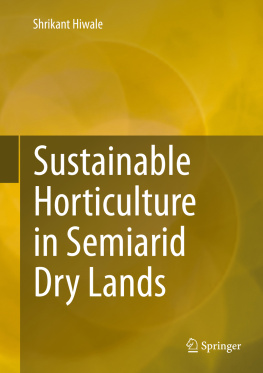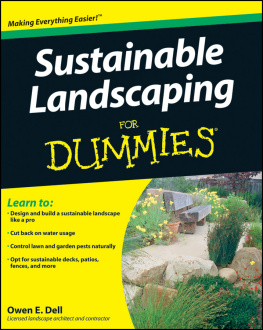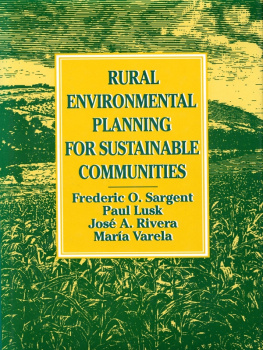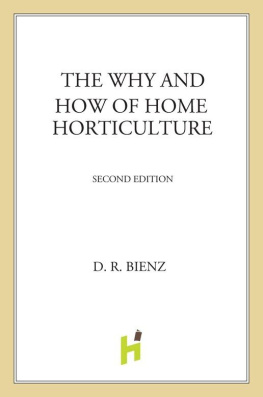1. Introduction
The semiarid tropics (SAT) extends over 2.1 billion ha and supports a large population. Ninety percent of the area and 99 % of the population are located in developing countries. Currently crop yield is low throughout the non-irrigated area of the semiarid tropics. Substantial increase in productivity is needed in the future to sustain population increase. India contains about 56 % of the SAT population on about 19 % of semiarid tropics. The area is predominantly marked by vertisols which are known to possess the best potential for increasing manifold. Though India has made significant stride in food production in the recent past, major emphasis was given on irrigated and resource-rich situations. However, in rainfed areas, the marginal farmers are still practicing the traditional way of farming and struggling below the poverty line. Therefore, this trend needs to be discouraged. Virtually, a sizable area (171 m ha) in our country is categorized as degraded lands. Such lands which are subjected to problems of water and wind erosion, salinity, alkalinity, acidity, water logging, gullied and ravine lands, shifting cultivation, etc. are either lying vacant or underutilized. Although these lands have their own biophysical farming constraints, they can be utilized efficiently on sustained basis for fulfilling the basic needs of food, fruit, fuel, fodder, fiber, fertilizer, etc. through horticulture-based farming systems by adopting practically feasible, economically viable, and eco-friendly technologies developed in the recent past.
In India tremendous pressure has been put on natural resources, owing to not only degradation of principal resources like land, water, and vegetation but also reduced per capita availability of land. At these places, the extent of land degradation has crossed such critical limits that it is difficult to bring it back to its original state. The unscientific cultivation of annual crops in rainfed areas, as usually is the case, accelerates runoff, soil loss, as well as other degradation processes causing fragile ecosystem. In India about 53.34 million tons of top soil (16.4 t/ha) containing 5.4 million tons of plant nutrients is lost annually due to agriculture and associated activities (Dhruva Narayan and Ram Babu ). The prime agricultural lands continue to be diverted to nonagricultural uses like industrialization and urbanization with the result that marginal rainfed lands are brought under cultivation with least attention on resource conservation. Out of 143 million hectares of arable land in India, nearly 74 % is rainfed, which contributes about 42 % of the total food production. However, soil moisture stress due to vagaries of weather, moderate to severe soil erosion, and poor soil fertility are the major limiting factors of low productivity in rainfed areas.
Trees are known for their conservative as well as reproductive nature. They provide not only fruits but fuel and fodder also. Apart from this, they are known to withstand vagaries of monsoon better than agricultural crops. High cost of earth structure construction and the fact that they are not well maintained so there is a greater need for biological means of conservation. Comparatively the establishment and maintenance of the agri-horti production system are moderate (Hiwale ). Very less work has been done to study the role of trees in reducing degradation under rainfed conditions with a farming system approach.
Fruit cultivation has so far been associated with fertile soil with assured irrigation, but presently the irrigated fertile land is already being used for meeting the food requirement of the ever-increasing population and industries. The marginal and degraded lands in arid and semiarid regions of the country with practically no irrigation facilities are to be used for increasing fruit production with simultaneous need to meet the basic demand for food, fodder, and fuel. Hence, no time is to be lost in developing highly productive self-sustainable farming systems fully adapted to the precarious ecology of arid regions.
This seeks to achieve more productive, sustainable, and diversified output from the land than is possible with cropping system. The approach aims at optimizing the use of land, water, and vegetation in an integrated way and thus helps to alleviate drought and moderate floods, prevent soil erosion, improve water availability, and increase production of fruits, vegetables, fuels, and fodder on a sustained basis. Considering the above facts, horticulture-based composite farming systems were evaluated from 1985 to date to establish a viable model for rehabilitation and utilization of semiarid rainfed areas of western India.
References
Dhruv Narayan VV, Rambabu (1983) Estimation of soil erosion in India. Indian J Irrig Drain Engg 109(4):419434 CrossRef
Hiwale SS (2004) Technical bulletin on Develop sustainable Agri-silvi-Horti Production system for Marginal lands under arid conditions. Central Horticultural Experiment Station, Vejalpur, 389340
Young A (1988) Agroforestry in the control of soil erosion by water. Agroforestry Abstracts (172/3), pp 3948
2. Problems of Horticulture in Semiarid rain fed areas







